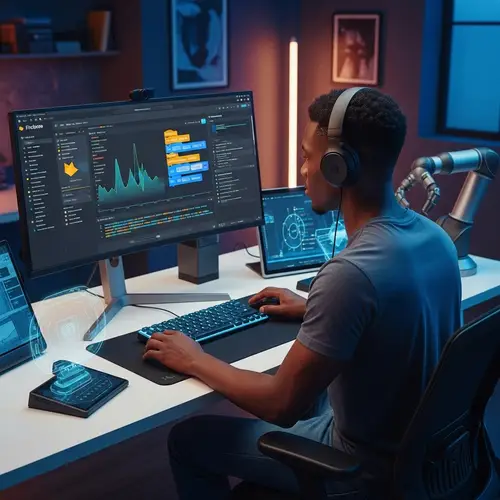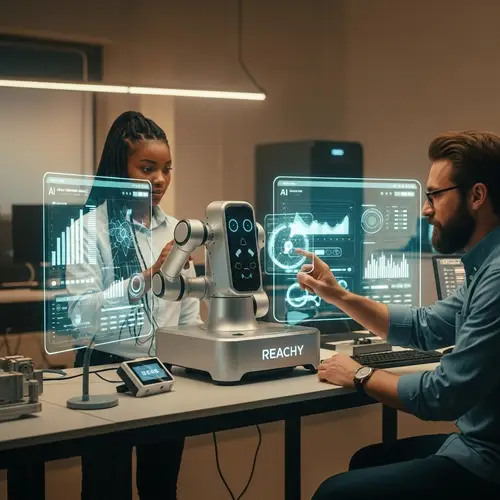Amazon Deploys DeepFleet AI to Optimize Robot Traffic in Warehouses
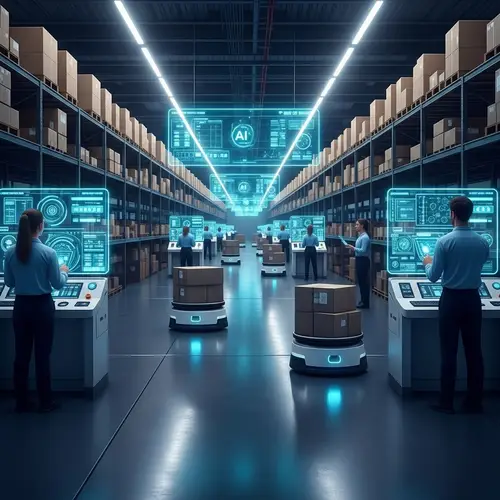
Managing thousands of robots inside giant fulfillment centers sounds like a sci-fi movie. But for Amazon, it’s Monday. The tech powerhouse has rolled out a game-changing system called DeepFleet—an intelligent traffic controller for its AI powered warehouse robots. Let’s just say it takes warehouse logistics to a whole new level of precision… and chaos prevention—to say the least.
Why Amazon Uses AI for Warehouse Robots
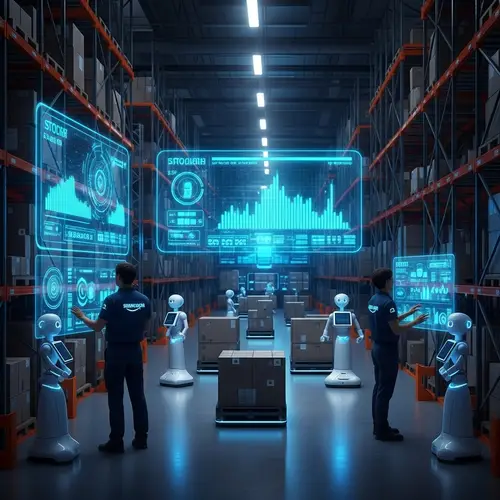
Picture hundreds of bots zooming between shelves, hauling packages, and dodging each other like it’s rush hour with no stoplights. These aren’t toys—they’re what keeps your Prime orders fast and furious.
As e-commerce explodes, physical floors get crowded. Human workers now share space with countless bots. Without intelligent coordination, the risk of collisions, delays, and downtime skyrockets. Enter DeepFleet AI—Amazon’s latest illustration of how AI in logistics automation can dramatically boost robot efficiency.
How Amazon Warehouse Robots Use DeepFleet AI
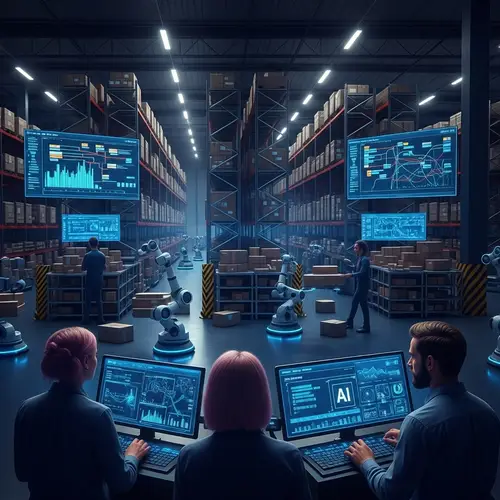
DeepFleet is not just another software upgrade. It’s an AI-powered brain that directs traffic for Amazon’s robot fleet. Think of it as mission control for the company’s army of Kiva-style bots.
The system uses advanced models trained on years of operational data. It predicts future movement patterns inside the warehouse and dynamically assigns routes to each robot in real time. Smart lane merging, speed adjustments, rerouting—DeepFleet does it all behind the scenes.
This system continuously learns and optimizes, adapting to shifts in order volumes and inventory layouts. So, whether it’s Black Friday panic or Tuesday calm, DeepFleet stays ahead of the curve.
What Sets DeepFleet Apart in Amazon Warehouse Robot Efficiency?
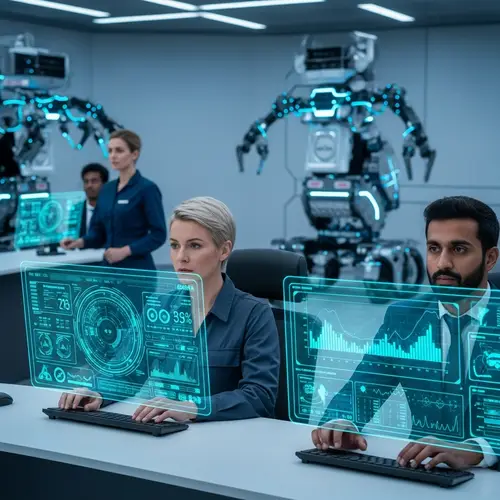
You might be wondering, don’t other companies use warehouse robots too? Sure. But most rely on static maps and fixed rules to handle navigation. That worked when fleets were small. But Amazon’s current scale? No chance.
DeepFleet’s secret sauce lies in dynamic optimization. Rather than just reacting, it anticipates. It can reroute traffic before congestion builds, and even simulate unexpected events like blocked paths or robot failures. It’s the difference between driving with Waze versus using a paper map.
In short: smarter traffic equals faster orders and fewer dropped packages.
How Real-Time AI Coordination Affects Human Workers
It’s not just the bots reaping rewards. Human warehouse associates benefit from smoother, safer navigation zones (yes, bots stop for people!). With fewer surprises on the floor, workers can focus better and move more efficiently.
Also, DeepFleet reduces idle time. Bots wait less, meaning workers don’t stand around waiting for packages. It all adds up—higher throughput without burnout.
Behind the Scenes: The Tech Stack of DeepFleet AI
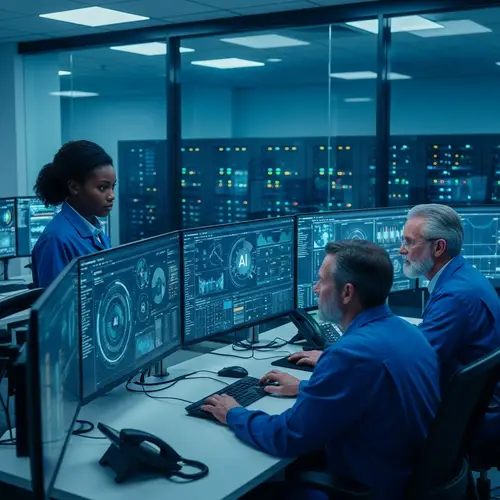
While Amazon doesn’t reveal all, here’s what we know: DeepFleet leverages reinforcement learning, a form of AI where systems “learn by doing.” Think AI agents being rewarded for moves that prevent gridlock or speed up a path.
The underlying infrastructure taps into Amazon’s AWS cloud services for massive data crunching. It integrates live warehouse data with predictive algorithms—sort of like training a chess AI, but with robots and parcels.
Combined with machine vision and IoT sensors, DeepFleet builds a real-time warehouse map that updates every second.
An Illustration of Efficiency Gains in Action
Let’s say a forklift blocks an aisle unexpectedly. Without DeepFleet, bots would queue up or reroute in clunky patterns. With it? The system predicts the jam, reroutes affected bots instantly, and keeps traffic flowing—like air traffic control but for glue sticks and gadgets.
One Amazon facility saw a 24% drop in average bot travel times post-DeepFleet deployment. That’s not just a metric—it’s hours saved, packages delivered faster, and fewer bots stuck in traffic jams.
FAQ: DeepFleet AI in Logistics Automation
DeepFleet has been gradually introduced across select Amazon fulfillment centers since 2023. Amazon is scaling rollout based on operational success.
No. DeepFleet supports human roles by improving robot coordination. Workers still handle decision-making, packaging, and quality control—things bots can’t master easily.
By predicting movements and preventing collisions, DeepFleet creates more predictable pathways. This reduces on-floor surprises for both bots and people—a major security plus in busy facilities.
Currently yes. While other companies use AI-guided robots, DeepFleet’s scale, reinforcement learning methods, and real-time adjustments make it a distinctive instrument in the logistics world.
Probably not directly—but shorter delivery windows, fewer package mishaps, and better inventory availability? That’s all powered quietly behind the scenes by DeepFleet.
A Glimpse Into the Future of AI-Powered Warehousing
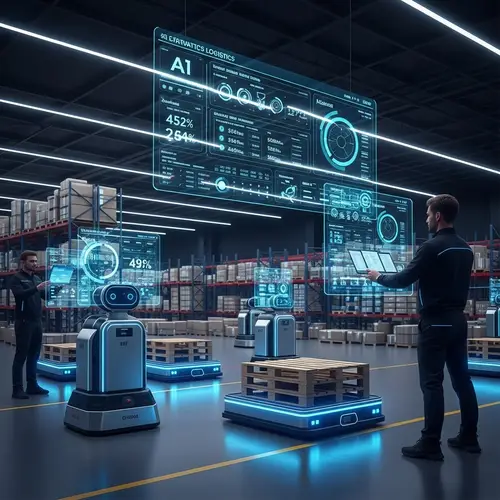
DeepFleet AI isn’t just smart—it reflects a larger trend. As more businesses turn to automated logistics, systems once considered science fiction are now daily operations.
Amazon’s DeepFleet robot system shows how AI can act as an intelligent logistics partner—not just a tool, but a warehouse strategist.
With every algorithmic tweak, Amazon continues raising expectations. And the question isn’t if other companies will follow… but when and how well.
Wrapping It Up

In the race for warehouse efficiency, Amazon isn’t just moving faster—it’s moving smarter. By integrating DeepFleet AI, the company harnesses real-time thinking for thousands of machines, improves worker security, and illustrates what’s possible in modern logistics automation.
Curious about how this could apply to your operation? Start investigating AI systems that do more than just follow orders—they think ahead.
Want to learn more about innovation in warehousing? Subscribe now for weekly updates on AI, robotics, and logistics transformation.



